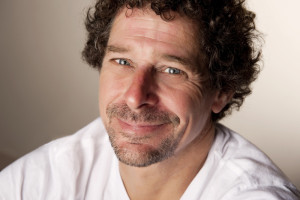 Focusing on one task at a time allows us to be present. Doing more than one thing at a time divides our attention. When we read and eat at the same time, for example, part of our mind is on what we are reading and part on what we are eating;we are not getting the most from either activity.
Focusing on one task at a time allows us to be present. Doing more than one thing at a time divides our attention. When we read and eat at the same time, for example, part of our mind is on what we are reading and part on what we are eating;we are not getting the most from either activity.
Similarly, when we practice yoga and our focus travels from our mat to our work, then to dinner, then to a conversation we had last week, then to a phone call we are planning,etc., etc., we certainly are not getting the most out of our yoga practice, nor are we giving adequate attention to the other things we are thinking of.
While many people focus on the physical aspects of yoga, the psychological aspects run even deeper and offer a richness and benefit that can be even more rewarding than bodily gains. A yoga class offers a great opportunity to practice psychological “exercises” that can lead to an increased sense of calmness, clarity and stability. These “exercises”are related to one pointed attention.
What is it? One pointed attention is an aspect of Dharana, the sixth limb of the eight limb path of yoga. Dharana refers to “immovable concentration of the mind.” The essential idea is to hold the concentration or focus of attention in one direction rather than letting it wander. As focus becomes more stable other activities of the mind fall away. The particular object selected has nothing to do with the general purpose, which is to stop the mind from wandering -through memories, dreams, or reflective thought – by deliberately holding it single-mindedly upon some object.
How to do it? In a yoga class your breath can be that object. Focusing on, or witnessing, your breath as you move through the postures (asanas) offers a chance topractice one pointed attention. Observe your breath during your practice. Once you come into a pose stop moving and adjusting and bring your attention to your breath … the sound, texture, depth, rate, feeling, etc. You can do this with a controlled breath(pranayama) such a ujai breathing (ocean breath) or you can simply observe your natural breath pattern. [Controlled breathing is easier to stay focused upon than a natural breath pattern because it involves more senses.] When you become aware that your mind has wandered, and it will, simply bring your attention back to your breath. Even if your mind tells you that the errant thought is important, let it go and bring your attention back to your breath. Your mind will fight with you and tell you that you must complete the thought – such as planning dinner or completing an imaginary conversation you might have with someone in the future. You do not need to. Simply return your attention to your breath. That is all there is to it.
I find it easier to hold one pointed attention if I add a repetitive sound in my head to my breathing (a mantra). If you do not have a mantra to repeat you can use the sound “so-hum” (“so” on inhale, “hum”on exhale), which in Sanskrit means “I am that” (so= “I am” and hum = “that”). Or, you can look online for other suggested mantras. There is a wealth of information online regarding mantra mediation that I will not go into here. These are simple instructions for peace of mind. However, they are difficult to master. Until it i strained, the mind will continue to go its own way, because it is the nature of an untrained mind to wander.
Why do it? Attention, focusing, or concentration can be learned and a yoga practice is an ideal place to begin this training. The benefits are numerous. The ability to give full focus to one thing at a time can help us accomplish any goal. Being present to the task at hand will produce our best effort and frequently enhances enjoyment of the task. But perhaps the greatest benefit of a trained mind is the emotional stability it brings. In order to get angry, upset or anxious our attention has to go there. If we can control where our mind goes then we can control our emotions.
In addition to practicing yoga, Bob Glaser is a Clinical Psychologist and yoga instructor.
He teaches a Flow 2 class at Bella Prana Yoga and Meditation on Mondays at 5:30pm located at 1000 W. Kennedy Blvd. Tampa, FL 33606.
